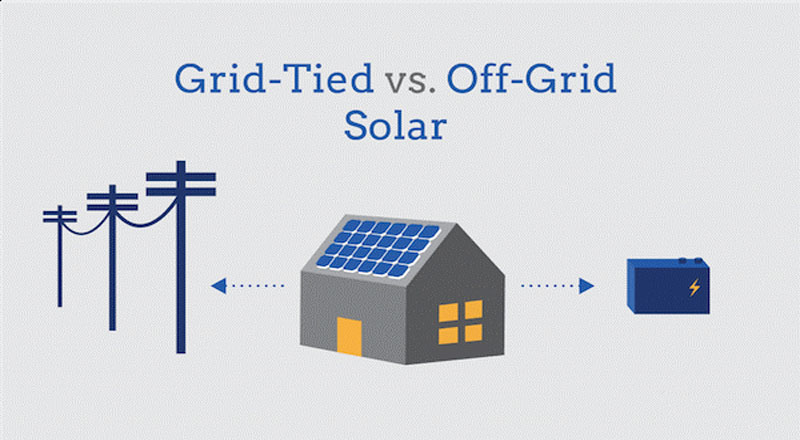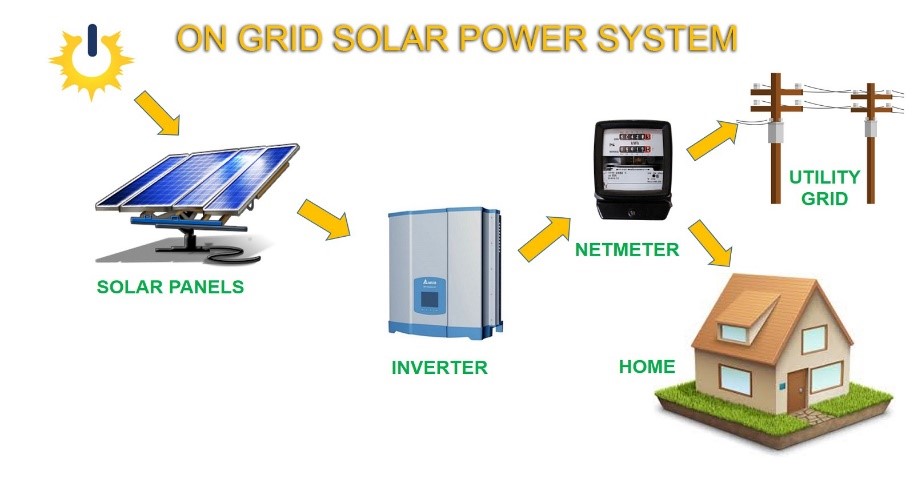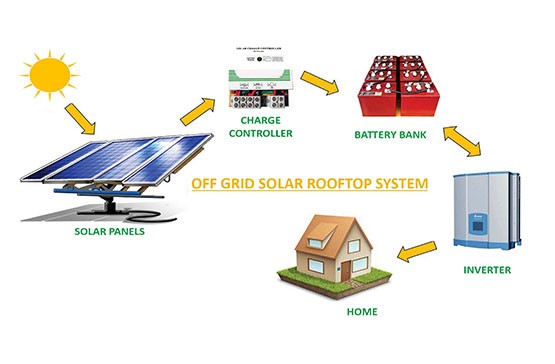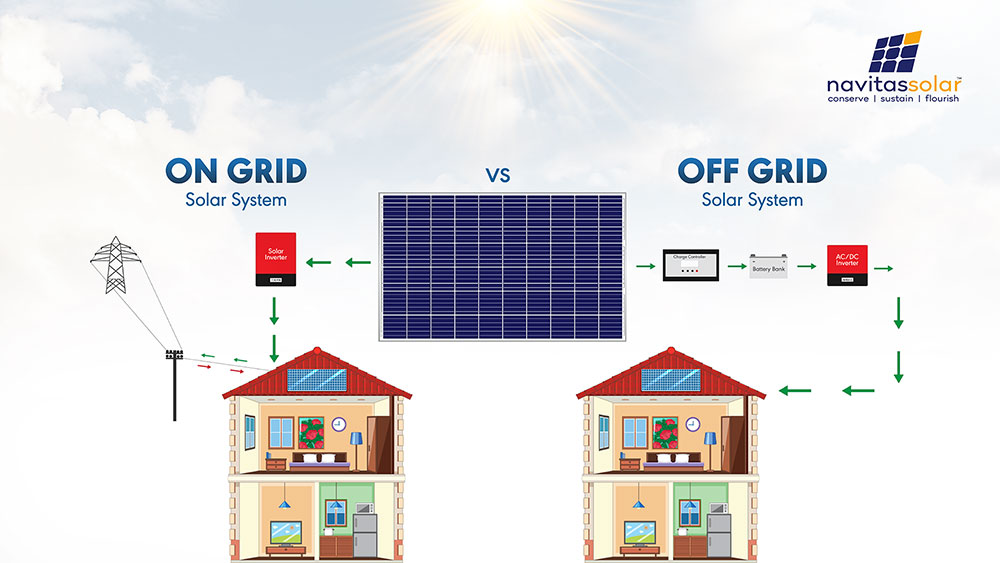Off-Grid Vs On-Grid Solar Systems
At Navitas Solar, we cater to various types of customers who need a particular solar system, that suits their requirements. In general, people face a dilemma over choosing the Off-Grid or On-Grid Solar System. Let’s understand both types of grids.
The renewable energy sector is booming like anything nowadays especially solar and wind. According to the Ministry of New and Renewable Energy (MNRE), the Indian Government targets to install a 100 GW grid-connected solar power system by 2022. The government has launched different policies also to promote solar energy. Advantages of solar and different financial incentives encourage everyone to go solar, be it commercial, residential or industrial consumers! When it comes to the type of solar system, it depends on the connection of the solar system with the utility grid.

On-Grid Systems
An on-grid solar system is a system, which is connected to the utility’s power grid. On-grid systems give consumers round the clock access to electricity. This system ensures that the consumer has enough electricity according to the demands irrespective of the solar system’s generation. Grid-tie systems are advantageous as the consumer does not need to buy an expensive battery backup to store excess energy and this makes on-grid systems more popular in residential spaces. Businesses also use this system to meet their daily requirements and earn income from the excess power generated.

Power Access
When the generation of the solar system is greater than the demand, the consumer can feed extra-generated units into the grid and gets compensation for it. When the generation of the solar system is lesser than the demand, the consumer can draw the extra-required units from the grid. In this way, in this system, the consumer will have power access round the clock.
During Blackout conditions
The consumer may not be able to have electricity when the grid goes down in this system. It is for ensuring the safety of utility workers who are doing maintenance work on the grid. If the consumer has opted for a grid-tied system with battery backup, there are chances that the consumer may have electricity when the grid goes down.
Electricity Bills
In the On-grid solar system, when the consumer is using electricity from his solar generation, then also there are some charges which grid levies on the consumer. There are two types of charges: service charge and demand charge. A service charge is a charge that is levied on the consumer for connecting their business or homes with the grid. For many utilities, this charge is a flat rate type and is not dependent on the units of energy consumed from the grid. The other type of charge is the demand charge. Demand charges are typically levied on commercial properties and are the increased electric rate the consumer pays for the power usage during a peak demand period. If the consumer pays very high demand charges, he/she may also want to look into peak demand shaving with solar and batteries.
Off-Grid Systems
The off-grid solar system is an independent system, which is not connected to the utility’s power grid. This kind of system can be developed by connecting a battery with the solar system. When the solar system will have sunny hours, the solar system itself supplies the demand of the consumer but during cloudy days when the sun is not shining fully and the solar system is not able to generate the electricity according to the demand, the consumer can withdraw the excess required electricity from storage device like a battery. The grid in this system is not at all connected and responsible for supplying electricity to the consumer. Therefore, in off-grid systems, if a consumer is not having sufficient storage device, the consumer may have less or no access to the electricity at night. This system is ideal to install in rural and remote areas where frequent power outages are faced.

Power Access
Most off-grid solar systems are designed to produce certain extra electricity than the demand. This is to ensure round the clock power for the consumer. The extra electricity generated in the daytime by the solar system would be stored in batteries and that extra energy can be accessed at night time or during cloudy weather conditions. When the weather remains bad for many days, the battery storage would not be sufficient. It is useful that an extra storage bank is installed considering bad weather conditions in mind but it’s also true that extra batteries mean extra cost.
During Blackout conditions
In this kind of system, the solar system is working independently from the utility grid. If the grid faces the blackout condition, it does not affect the consumer at all. The off-grid solar system still works in the power outage situation and the consumer will not be facing any kind of cuts in the electricity.
Electricity Bills
If the solar system is off-grid type, the consumer will not be issued any kind of electric bill, as the system is not at all connected with the grid. Nevertheless, even with no electricity bill from the utility grid, off-grid systems are costlier than On-grid systems because of additional storage devices like batteries that are essential to make the off-grid system more viable.
As India’s leading provider of end-to-end solar systems, Navitas Solar has vivid insights into the varying needs of the customers. We also strive to help you decide on the most suitable system for you.


Related Posts
You May Also Like
A Guide to Choosing the…
Read MoreEVA Sheets: Super Performer of…
Read MoreA Step-by-Step Guide to Solar…
Read MoreGrow Leaders of Tomorrow: A…
Read MoreThe Future of Energy is…
Read MoreNavitas Solar Powers Up for…
Read More